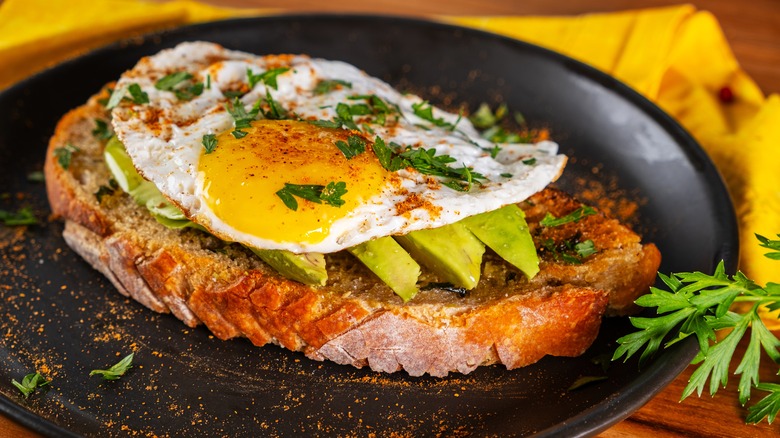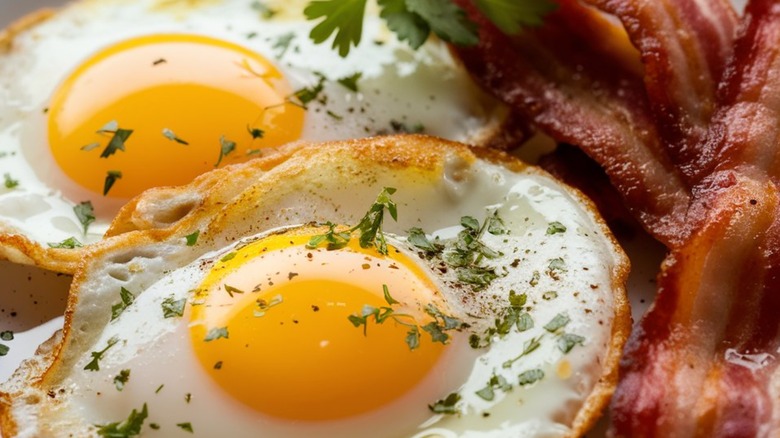The Key To Cooking Sunny Side Up Eggs With No Raw Whites
There is no wrong way to eat eggs. Whether you want them perfectly fluffy, or hard boiled and pickled, it all depends on your personal preference. But there is one style that seems to be particularly divisive: fried eggs. Some people gag if the yolk is runny, while some swear that sunny side up eggs are the only way to really enjoy them. If you're part of the latter group, you've probably run into the age-old problem of how to fully cook the white without having the yolk get hard. For advice, we turned to Nelson Serrano-Bahri, a chef and Director of Innovation at the American Egg Board (yes, this is an official government-associated organization dedicated to eggs). His solution: trap steam in the pan with the use of a lid.
Before we more fully share Serrano-Bahri's wisdom, we should note that the Food and Drug Administration (FDA) recommends thoroughly cooking both egg yolks and whites to knock out bacteria like salmonella and broadly ensure food safety. It's important to be aware of the risk, but we wouldn't necessarily give up a nice runny yolk every once in a while. Ultimately, take a moment to evaluate the situation and how much you trust the source of your eggs. Pasteurized eggs are generally safe from bacteria, so you can look for those at your grocery store if you're concerned. It goes without saying that you should always avoid cooking eggs this way when there is a known outbreak of food-borne bacteria in your region. Likewise, you should be aware of common myths like the one that claims yolk color can signal that an egg is unsafe for consumption.
How to cook the perfect sunny side up eggs
When it comes to frying eggs, Serrano-Bahri recommends paying close attention to how much heat you're using. Rather than blast the heat to its maximum, turn it to medium-low. Slow and steady wins the race, so don't rush the step of cracking your eggs, either. Melt your chosen fat (butter or oil), and wait until it's hot and shimmering before adding the egg to the pan. Then, put a lid on top to trap steam. This will help cook the whites but leave the yolk deliciously runny because they have different consistencies. Make sure that you're not overcooking the eggs by checking on them often. Once the whites are solid, turn off the heat, remove the eggs from the pan, and enjoy.
For crispier edges, Serrano-Bahri says that the best thing to do is to use a cold egg directly from the fridge. According to him, the cold helps keep the yolk somewhat raw but also gives the whites the desired crunch. The rest of the recipe stays the same, except that you'll wait a bit longer for the edges of the whites to turn golden, then take the pan off the heat. It's so easy that you'll wonder why you haven't been doing it like this all along.

